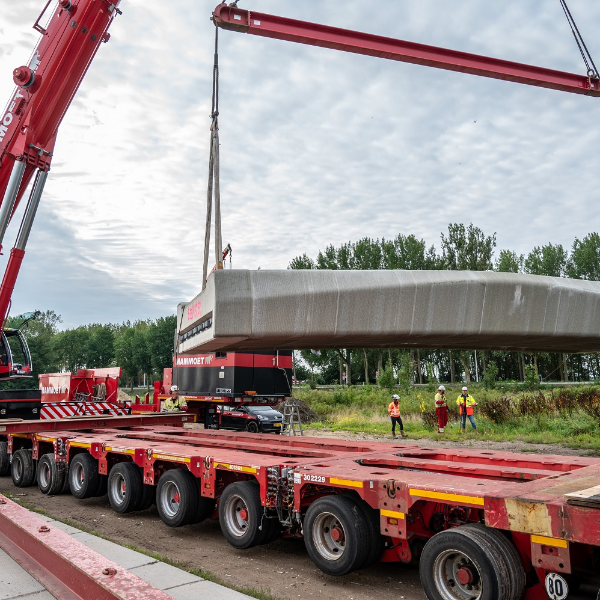3D concrete printed bicycle bridges: sustainable and safe innovation

3D concrete printed bicycle bridges: sustainable and safe innovation
In the Purmerend region, the N243 is being modernised. Part of this is the installation of 3D-concrete printed bicycle bridges. Three innovative bridges have been made using advanced 3D concrete printing technology. These bridges improve road safety by separating cyclists from other road users while offering significant sustainability benefits.
3D concrete printed construction
The bicycle bridges were made with a 3D concrete printer. From scratch, the bridges were printed layer by layer. Each bridge consists of seven parts. These are glued together, after which the overall bridge is reinforced with cables. The longest bridge spans more than 13 metres.

Sustainability
One of the major advantages of 3D concrete printing technology is the reduced use of materials. This reduces CO2 emissions as well as significantly reducing the amount of waste generated during the construction process. 3D printing eliminates the need for formwork. Moreover, fewer construction steps and activities are required on site, which significantly reduces the ecological footprint.
The bridges will be decked and railed in September 2023 and then connected to cycle tracks, allowing schoolchildren and other cyclists to move safely in this part of North Holland.
More information?
